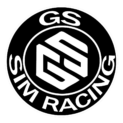Introduction to Monitors in Sim Racing
Sim racing has experienced a massive surge in popularity in recent years, captivating motorsport enthusiasts and gamers alike. As technology continues to advance, so does the immersive experience of racing simulations. One crucial aspect that significantly impacts the overall thrill and realism is the choice of screens and monitors. In this blog post, we delve into the world of screens and monitors in sim racing, exploring the various options available and their influence on the ultimate virtual racing experience
Understanding the Importance of Screens and Monitors
Sim racing aims to recreate the sensation of being behind the wheel of a high-performance vehicle, and the visual experience plays a vital role in achieving this. Screens and monitors serve as the window to the virtual world, allowing racers to perceive the track, surroundings, and opponents with precision. The right screen setup can elevate the immersion, improve lap times, and heighten the overall enjoyment of the simulation.
Key Considerations When Choosing Screens and Monitors:
Size of Monitor
The size of the screen directly affects the FOV, which determines how much of the virtual environment is visible. A wider FOV enhances peripheral vision and provides a more realistic experience. Triple-screen setups or ultra-wide monitors are popular choices among sim racers seeking an immersive and expansive visual field.
Resolution and Refresh Rate of Monitor
Resolution and Refresh Rate: High-resolution screens, such as 4K or QHD, deliver sharper images and greater detail, allowing racers to discern subtle cues on the track. Additionally, a higher refresh rate (e.g., 144Hz or 240Hz) ensures smoother motion, reducing motion blur and input lag, thereby enhancing responsiveness and providing a competitive edge.
Panel Technology
Panel Technology: Different panel technologies, including TN (Twisted Nematic), IPS (In-Plane Switching), and VA (Vertical Alignment), offer varying advantages. TN panels offer faster response times, which can be crucial in competitive racing, while IPS and VA panels provide better color accuracy and wider viewing angles for a more visually pleasing experience.
Multiple Monitor Setups and Triple Screen
Triple-Screen Setup: Triple-screen setups, where three monitors are arranged side-by-side, have gained popularity due to their immersive nature. With a wider FOV, racers can better gauge distances, spot opponents in their peripheral vision, and have a more realistic sense of speed. Additionally, the increased screen real estate allows for more intuitive placement of additional telemetry and vital information.
Ultra-Wide Monitors: Ultra-wide monitors with an aspect ratio of 21:9 or wider provide a seamless and immersive racing experience without the need for multiple screens. While they offer a narrower FOV compared to triple-screen setups, they eliminate the bezel gap between screens and provide a more streamlined visual experience.
Curved Monitors: Curved monitors, whether in a triple-screen setup or ultra-wide configuration, can further enhance immersion by mimicking the curvature of a racetrack. The curvature creates a sense of depth and engulfs the racer, making them feel truly absorbed in the virtual world.
Additional Features and Accessories
HDR (High Dynamic Range) and Quantum Dot Technology: Monitors equipped with HDR and Quantum Dot technology provide enhanced color reproduction. This results in deeper blacks, and brighter highlights, resulting in a more vibrant and visually striking experience.
Adjustable Stands and Mounts: Ergonomics is crucial during long sim racing sessions. Adjustable stands and mounts enable racers to position their screens at optimal eye level, minimizing strain and maximizing comfort.
Sim Racing Cockpits and Surrounds: For the ultimate immersive experience, dedicated sim racing cockpits and surrounds are available, integrating screens, seats, and controls into a cohesive racing setup. These purpose-built structures provide a realistic driving position, allowing racers to feel every turn, acceleration, and brake input.
Monitor Calibration and Software Considerations
To fully optimize the visual experience, proper calibration and software adjustments are essential. Racers should ensure correct color calibration, adjust brightness and contrast levels, and explore software options that enhance graphics. Also use such settings as anti-aliasing and post-processing effects. Be aware that there may be a trade off between looking pretty and the refresh rate. But, you also want a nice crisp image on screen.
Budget Considerations
While it’s tempting to go all-out and buy the latest and greatest monitors, it’s important to consider budget constraints. Fortunately, there is a wide range of options available to suit various budgets, from entry level monitors to higher end gaming displays. Prioritize the features that matter most to you and find the balance between affordability and performance.
In Summary
Screens and monitors play a pivotal role in sim racing, giving the visual gateway to an immersive virtual racing experience. Whether opting for a triple-screen setup, ultra-wide monitor, or curved display, racers can enhance their immersion, precision, and overall enjoyment. Considering factors such as size, resolution, refresh rate, panel technology, and additional features can help racers find the perfect setup. However, it should be on that suits their preferences and budget. So, buckle up, choose your screens wisely, and prepare for an exhilarating journey into the thrilling world of sim racing. See the more detailed information on how technology has impacted sim racing by clicking here.
